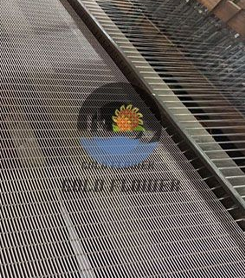Dec . 03, 2024 15:58 Back to list
Exploring the Benefits of Metal Screen Materials for Versatile Applications
Metal Screen Material A Comprehensive Overview
Metal screen materials have garnered significant attention in various industries due to their unique properties, versatility, and durability. These screens are integral to many applications, ranging from architectural designs to industrial machinery. Understanding the characteristics and uses of metal screen materials will help us appreciate their role in modern engineering and design.
Composition and Types
Metal screen materials are primarily composed of metals such as stainless steel, aluminum, copper, and bronze. Each type of metal offers distinct qualities that make it suitable for different applications. For instance, stainless steel is renowned for its corrosion resistance and strength, making it ideal for use in environments where hygiene is paramount, such as in food processing or medical facilities. On the other hand, aluminum is lightweight and resistant to rust, making it a popular choice in outdoor applications, such as patio screens and gates.
The manufacturing process for metal screens involves various methods like weaving, welding, and perforating. Weaving involves interlacing wires, creating a mesh-like structure that allows airflow while providing a solid barrier. Welded screens are formed by fusing metal wires at intersections, offering increased strength and durability. Perforated sheets, with holes punched throughout the material, serve a different purpose, allowing specific airflow and light passage while still maintaining a solid structure.
Applications in Architecture and Design
In architectural applications, metal screen materials are celebrated for their aesthetic qualities and functional benefits. They can be used creatively to create facades, sunshades, and privacy screens, adding texture and depth to buildings. Moreover, metal screens help in controlling light levels and reducing heat buildup in structures, making them an energy-efficient choice. For instance, many contemporary buildings incorporate metal screens to enhance their visual appeal while optimizing thermal performance.
metal screen material

In addition to energy efficiency, metal screens play a significant role in sustainable design. By facilitating natural ventilation and reducing reliance on artificial climate control, they contribute to lower energy consumption. Furthermore, the durability of metal materials means that structures can enjoy a prolonged lifespan with reduced maintenance costs.
Industrial Applications
Beyond architecture, metal screen materials are widely used in various industrial applications. In manufacturing, these screens serve critical functions in filtration processes, enabling the separation of solids from liquids or different grades of materials. For example, in the pharmaceutical industry, metal screens ensure that only purified substances are processed, adhering to strict health and safety standards.
Another important application is in the mining and mineral processing sectors, where metal screens are employed in sorting and grading materials. They help to optimize production efficiency by ensuring that only appropriately sized particles pass through, maximizing yield while minimizing waste.
Conclusion
In conclusion, metal screen materials are a robust and versatile choice, transcending their functional roles to become key components in both architectural and industrial applications. Their strength, aesthetic qualities, and resistance to corrosion make them ideal for a wide range of uses, from enhancing building design to facilitating complex industrial processes. As industries continue to evolve and prioritize sustainability, the use of metal screen materials will undoubtedly expand, reaffirming their importance in a modern context. Understanding their characteristics and applications not only highlights their significance in today’s world but also opens avenues for innovation and further development. The future of metal screens is bright, promising an integration of technology and design aimed at efficiency and sustainability.
share
-
CE Certified 250 Micron Stainless Steel Mesh | Precision & Durability
NewsAug.27,2025
-
CE Certified 250 Micron Stainless Steel Mesh for Precision & Durability
NewsAug.26,2025
-
CE Certified 250 Micron Stainless Steel Mesh for Precision & Durability
NewsAug.25,2025
-
Premium CE Certified Metal Fine Mesh for Precision & Safety
NewsAug.24,2025
-
Stainless Steel Wedge Wire Mesh: Durable, Precision Filtration
NewsAug.23,2025
-
CE Certified 250 Micron Stainless Steel Mesh for Precision Filtration
NewsAug.22,2025

